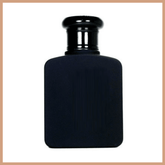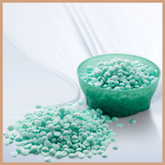Top, Middle & Bottom Notes: Understanding the Fragrance Pyramid and Scent Notes
Have you ever struggled to understand perfume notes and the fragrance pyramid? Our guide below can help you learn more about perfume notes, the fragrance pyramid and the science behind why some fragrances last longer than others. It’ll also assist you in decoding our fragrance oils descriptions so that you can easily determine the top, middle and bottom notes.

Understanding the fragrance pyramid

A fragrance pyramid is essentially a triangular structure comprising of 3 sections; top notes, middle (or heart) notes and bottom (also known as base) notes. This fragrance pyramid helps us to visualize a perfume or fragrance in terms of what they’re comprised of in relation to their scent notes.
The fragrance pyramid also acts as a timer to give us an idea on the longevity of the top, middle and bottom scents, simply put – the duration each note section lasts on the skin.
Jean Carles, a perfumer, established and taught this fragrance pyramid also known as the olfactive pyramid. As a perfumer, by balancing the orchestration of the perfumes formula, the fragrance will come to life, telling its unique story as each section of notes evaporate.
Further reading: Read more about the olfactive pyramid here
With this in mind, let’s look at top, middle and bottom notes as well as delving deeper into fragrance note longevity when applied to the skin.
What are top notes?
Top notes are what captivate you from the first spray. These are the scents which give you the first impression of the fragrance and usually help the fragrance tell its unique story.
Top notes are lighter than middle and base notes and are usually made up of fresh, uplifting floral or citrus scents. Some of the most popular top notes include lemon, bergamot, rose and lavender as well as peppermint and airy scents.
Top notes last for around 5-20 minutes before evaporation starts to make way for the middle or heart notes.
What are middle (or heart) notes?
Middle (or heart) notes are simply as the name suggests – the fragrances middle notes and those which are the most prominent once the fragrance has had a bit of time to develop. These middle notes make up for around 65-70% of the overall fragrance architecture.
The middle notes hold onto some of the top notes but intensify the fragrance further by adding more full-bodied, floral scents such as jasmine and ylang ylang along with spicy scents such as cinnamon and pepper. Fruity scents such as apple and strawberry are also common middle notes.
Middle notes last for between 20 minutes – 3 hours before the bottom (or base) notes start to emerge.
What are bottom (or base) notes?
Bottom (or base) notes are the grounding step of a fragrance, providing balance and an increased depth to the overall fragrances composition. The bottom notes also form the foundations of the fragrance. These are the fragrances that linger the longest. Whether we're spraying perfume or lighting a candle, these are the notes that linger long after the other notes have dissipated.
Usually rich, darker and warmer, the bottom notes really sink into the skin providing that long-lasting fragrance we get from a perfume. Popular bottom notes include vanilla, powdery musk and woody accents such as sandalwood, cedarwood and patchouli.
Bottom notes last up to (and in most instances over) 6 hours on the skin and possibly even days on clothing!
Let’s look at fragrance families

Image courtesy of fragrancesoftheworld.com and copyright Michael Edwards 1992-2022.
Have you ever been to a perfume shop and spent an unbelievable amount of time just spraying each perfume to try and find one you love? We’ve all been in this situation sometime or other and it can be quite frustrating and time consuming having so many perfume choices available but not having a clue on which would suit you.
One of the simplest ways to find out your perfume scent preference is by learning about the different perfumes scent composition which will give you an idea on the specific fragrance family the scent falls into.
Fragrance families were created as a classification system by the perfumery/fragrance industry to place fragrance types into groups in turn helping them to distinguish certain scents. Fragrance families can help us to narrow down our perfume preferences and make choosing our next perfume a little bit easier!
The first fragrance wheel was invented in 1949 by Paul Jellinek, an Australian perfume maker, later being developed by U. Harder in 1979.
The diagram we’ve shown above was created by Michael Edwards and enables us to understand how scents may be related to each other by simply looking at their olfactory personalities i.e. their smell.
As you can see there are four key fragrance families: Floral, Oriental, Woody and Fresh. Each of these key fragrance families also have subcategories.
We’ll now look at the type of scents included within these four key fragrance families.
Floral

Floral is the most popular fragrance family! Nearly every perfume available will have at least one floral note present within its composition. Floral fragrances are feminine and classy, combining soft or striking floral notes of flowers we love such as rose, jasmine, lavender and lily of the valley.
Some of our most popular floral fragrance oils are: Lavender, Rose and Jasmine.
Subcategories of the floral family comprise of fruity, floral, soft floral and floral oriental.
Oriental
Oriental fragrances are known to be rich, sultry and smooth. Amber is usually a dominating fragrance note within oriental scents and are captivating from the first spray. This fragrance family is longer lasting than others as they’re full-bodied. Scents to look out for are vanilla, spices and tobacco.
Some of our most popular oriental fragrances are: Dragon’s Blood, Egyptian Amber and Dark Honey & Tobacco.
Subcategories of the oriental family comprise of floral oriental, soft oriental, oriental and woody oriental.
Woody

Woody fragrances can be described as seductive and warm with dark, earthy undertones. This fragrance family is mostly associated with masculine scents although nowadays, most woody fragrances are marketed as unisex due to their warming nature. Common scents are cedarwood, sandalwood and patchouli.
Some of our most popular woody fragrances are: Sandalwood Vanilla, Woodsmoke & Leather and Nag Champa.
Subcategories of the woody family are woody oriental, woods, mossy woods and dry woods.
Fresh
Fresh fragrances have the broadest range and are the most recognisable as they include citrus, water and green scents. Fresh fragrances are viewed as modern, refreshing and exert playful vibes. Scent notes most common in fresh fragrances are lemon, orange, bergamot, ozone, marine, green leaf and stems.
Some of our most popular fresh fragrances are: Coconut Lime, Fresh Linen and Aqua Minerals & Sea Kelp.
Subcategories of the fresh family comprise of aromatic, citrus, water and green.
Why don’t perfumes smell the same on everyone?

So you’ve been with your friend to a perfume shop and have both tried on the same fragrance but it smelled better on your friend than it did on you. Why is this you may think? The simple explanation for this is your body’s chemistry and the oils present within your skin.
Each persons skin has a different pH balance and so when applying a tester perfume, this will react with the pH level and oils in your skin which in turn determines how the fragrance will smell on your skin and to you. Some chemical reactions may cause floral perfumes to smell bitter or pungent and citrus perfumes may smell overly sweet or sickly.
Did you know that certain medications and health conditions can also affect the way a fragrance sits on your skin? Depending on your skins pH level and the amount of oils already present on the skin, this will have an impact on which notes of the fragrance are released first.
In some instances, some of the middle or base notes may show initially upon first spraying and will stay for the duration of the fragrances longevity. If your skin is particularly oily, perfumes will tend to sit better and last longer. If you suffer with dry skin you may need to reapply perfume a few times throughout the day or alternatively you could opt for a heavier fragrance, such as a strong floral which will cling to the skins scent molecules more effectively.
Do perfumes expire?
Perfumes don’t really have a set expiry date however, the average shelf life is usually around 3-5 years. The majority of perfumes may still smell effective up to 10 years but will be dependent on where they’re stored. Some lighter base note fragrances may only last up to a year, whereas heavier base note fragrances tend to last much longer.
If your perfume has been opened a while and you can tell its changed in scent, then it’s likely that it’s starting to turn and slowly ‘go off’. With each spray you use, a small amount of air gets sucked back through into the bottle which starts to oxidise the fragrance mixture.
You may tell that a fragrance has ‘gone off’ by its smell or colour of the liquid. It may smell sour or metallic-like and the colour will be visibly darker. If you’ve had a fragrance for quite a while, then simply spray a little amount on your skin, leave to settle for a minute or so, then have a sniff to test if it still smells as it should. If it has ‘gone off’ though nothing else will really happen, the ‘off’ smell will remain so you may wish to dispose of the fragrance and buy a new one.
Our sense of smell (olfaction) is very important when it comes to receiving notes from perfumes. Our noses are very clever, working when we inhale, collecting numerous scent molecules which make up scents we experience on a daily basis.
We hope this article has provided an informative insight into the fragrance pyramid and how to find out which scents you like by way of using a fragrance wheel. You may now feel confident when decoding our fragrance descriptions to use to determine their individual top, middle and bottom notes.

If you’d like to make your own perfume for personal use, our blog post Make Your Own Designer Inspired Perfume At Home will guide you on the step-by-step process and options available.
Interested in making your own perfumes to sell? We offer assessments and fragrance bundles to do so. Check out our Perfume Assessments here and see our blog post Assessments & CPSR: How to Sell Bath and Body Products in the UK for further guidance.
Make Your Next Perfume With One Of Our Best Selling Designer Inspired Fragrances:








6 Comments
Discover Perfume South Africa and Perfume Cape Town
at affordable prices!!
I never realized how crucial the top, middle, and bottom notes are in creating a fragrance. It’s fascinating how each layer plays such a distinct role in how a perfume evolves over time. Understanding the fragrance pyramid really helps when choosing a scent that lasts all day!
https://www.authenteque.com/
Understanding the fragrance pyramid is essential for finding the Best Smelling Perfume For Women. Top, middle, and bottom notes each play a crucial role in the perfume’s overall scent profile. By learning how these notes work together, you can select a fragrance that perfectly matches your personal taste and lasts throughout the day.
Top notes are the first impression, like a captivating smile. Middle notes reveal the true character, adding depth and complexity. Base notes are the lasting allure, a signature scent that lingers. From fresh citrus to warm vanilla, understanding these layers is key to choosing the perfect fragrance, even in the vast world of American Fragrance
If you’re as intrigued by their fragrances as I am, you won’t want to miss my latest article. Dive in to learn more about what makes Ajmal Perfumes stand out and find the perfect scent for you. Trust me, you’ll be curious to explore more! 🌟
ajmal perfumes
Leave a comment
All blog comments are checked prior to publishing